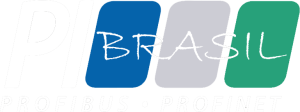Both the Profibus and Profinet user organisations, as well as the Fieldbus Foundation have announced they have made copyright agreements with PROLIST® INTERNATIONAL. The agreement allows PROLIST to publish the organisations’ fieldbus parameter names and definitions in its standardised process control device/system specifications and database.
|
From left: Gisbert Goecke, PROLIST, Richard Timony, FF, and Peter Zgorzelski, manager, PROLIST |
Headquartered in Leverkusen, Germany, PROLIST INTERNATIONAL (www.prolist.org) is a not-for-profit organisation composed of automation manufacturers, end-users, and university members. It is the successor organisation to the Project Group “Lists of Properties" (PROLIST®), supported by NAMUR, the international process industries’ end-user group, and Zentralverband Elektrotechnik- und Elektronikindustrie e.V. (ZVEI), the German electrical and electronic manufacturers' association.
NAMUR and ZVEI have collaborated to define and record properties and Lists of Properties (LOPs) for process control/automation devices and systems.
PROLIST INTERNATIONAL says its goal is to seek the reduction of engineering and transaction costs for procurement and sales in the area of process control technology. This includes integration of the workflows of all parties involved in plant lifecycle management.
The basis for this effort has been created in the form of machine-readable descriptions of the properties of process automation components that are relevant for engineering purposes.
The working results of PROLIST are published as LOPs in the NAMUR Recommendation NE 100 “Use of Lists of Properties in Process Control Engineering Workflows,” which provides a method for standardising the descriptions of process control and instrumentation equipment. As such, it supports data exchange between systems in a customer-supplier relationship.
Fieldbus Foundation President and CEO Rich Timoney praised his organisation’s involvement with PROLIST INTERNATIONAL.
“The Fieldbus Foundation is pleased to take part in PROLIST through this copyright agreement,” said Mr. Timoney. “We support the long-term goal of PROLIST, which is to optimise processes throughout the entire plant lifecycle at every point where information systems exchange data on process control devices. This endeavour will help companies reduce transaction costs by an electronic data exchange format which vendors, owner/operators, and EPC firms can use for communications.”
He added, “Ultimately, we believe this effort will result in the establishment of an international standard in co-operation with the International Electrotechnical Commission (IEC) and International Society of Automation (ISA).”
As part of an agreement, Profibus International said it is also providing PROLIST INETRNATIONAL with agreed-upon elements of the PROFIBUS specifications for use in the PROLIST feature lists, which will be published in the NAMUR recommendation NE 100, as well as for IEC standardisation activities to harmonise with the eCl@ss System.
In a statement released to the press, PI spokeswoman Barbara Weber said “The basis for this is the electronic data exchange between manufacturers and users or between different systems within companies (both manufacturers and users), such as ERP and CAE.
"This will prevent typographical errors caused by repeated entry of the same data and will reduce the quantity of paper documents.
"The PROLIST feature lists will enable optimum business processes, reduced process costs, and improved process quality. The created feature lists will also be carried over into the international standardization activities of IEC.
"The collaboration with PROLIST will result in a standardised mapping of PROFIBUS interface properties into PROLIST feature lists. As a result, all companies that produce or use PROFIBUS products can benefit from electronic data exchange throughout their business processes."
Supported by a “who’s who” of major process automation suppliers and end-users, PROLIST is creating lists of properties (eSpec Sheets) covering all classes of process control devices.
Another task has been development of an easy-to-use Web server for creating and maintaining instrumentation eSpec Sheets.
The organisation has also developed application tools for handling files and creating an XML-exchange format supported by SAP.


